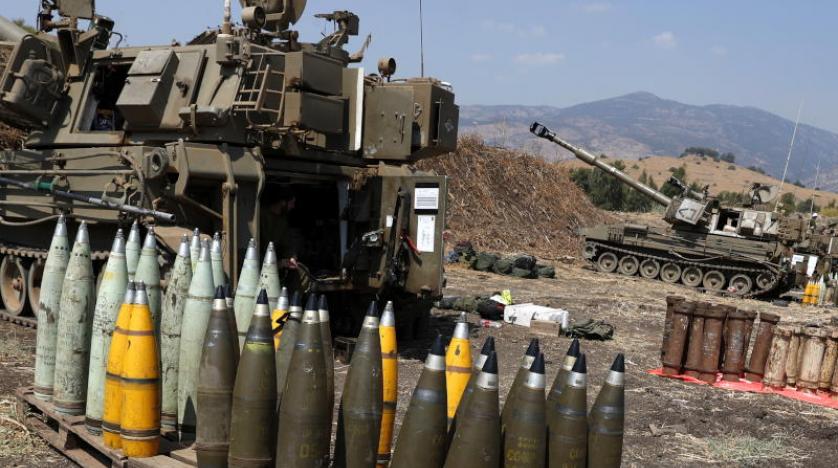Analysis/Iran Unrest Gave Israel a Window to Strike. Now the Danger Lurks Elsewhere
Amos Harel/Haaretz/November 24/2019
عاموس هاريل/هآرتس/اضطرابات إيران أعطت إسرائيل فرصة لضرب قواعدها العسكرية في سوريا أما الآن فالخطر على إسرائيل هو في مكان آخر
At what point would Russia demand Israel cease its hostilities?
Though it was Israel that struck most of the blows and took the initiative in the two recent rounds of escalation in Syria and the Gaza Strip, there appears to be a big difference between the two fronts.
In Gaza, Israel dictated the timing of the outbreak of hostilities and chose the opening shot – the assassination of top Islamic Jihad figure Baha Abu al-Ata. The military friction there did not get out of control and for now it appears Israel achieved the main aims it set for itself – hitting Abu al-Ata and a return to indirect talks with the Hamas regime, in the hope of reaching a long-term truce agreement in the future.
In Syria, the ping-pong balls are still flying, some of them not visible to the eye. Viewing the situation from the sidelines, it is hard go say exactly which blow was struck in response to which counter-attack and vice versa. Moreover, while the behavior of both Islamic Jihad and Hamas is more or less predictable, Iran’s position in the north is more complex.
It is quite possible that the next moves by Iran will be affected by the domestic political crisis there. Since the end of October the regime in Tehran has been bothered by the outbreak of mass protests in two countries in its orbit: Iraq and Lebanon. Last week, however, the Iranians’ troubles bumped up a notch when protests erupted again at home, in riots spreading to dozens of cities and towns throughout the country. The “gasoline protest,” which began in the populace’s response to the regime’s decision – under pressure from American sanctions – to raise fuel prices in the country by double-digit percentage points, has already exacted the lives of more than 100 Iranians, most of them demonstrators who were shot and killed by the security forces.
Security sources in Israel describe the current protest as the most serious since the Islamic Revolution in 1979. This, even though the precise criteria for comparison are not entirely clear, and even though the information coming out of Iran is only partial due to the authorities’ decision to shut down the Internet almost completely. It is reasonable to assume that the Israeli decision to respond more harshly in Syria – in the pre-dawn air force attack on Wednesday, more than 20 Iranian and Syrian targets were hit – took into account the assessment that the domestic troubles in Iran are opening a window of opportunity for Israeli action.
This is also an approach that could come back at Israel like a boomerang. Precisely from within the domestic pressure the Iranian regime is facing now, it is liable to conclude that a violent confrontation with Israel is beneficial. And the greatest danger is not lurking in Syria but rather in Lebanon – where Iran’s most effective asset is located: the huge rocket arsenal Hezbollah has accumulated.
Israeli intelligence officials figure Hezbollah leader Hassan Nasrallah clearly remembers the damage inflicted in the Second Lebanon War in 2006 and he is not keen to repeat the experience. However, Nasrallah is subordinate to the Iranians’ considerations and he has to cope on his own with increasing protest that is placing Hezbollah and Iran in its sights – to the extent of blunt accusations by Shi’ite demonstrators regarding the organization’s involvement in corruption and the drug trade.
Apparently, in the Iranian view the boldness that was demonstrated in the attacks on the Saudi oilfields in September have proven themselves. The launching of drones and cruise missiles made a big impression throughout the Middle East, especially as the Americans refrained from reacting to the attack – President Donald Trump explained that because the target was Saudi, it is a Saudi problem and not an American one. The Iranian temptation to act forcefully against Israel could rear up now in the wake of the Saudi precedent, despite the clear differences in the attack and defense capabilities of the two countries. Such an attack could be carried out from afar: The drones that attacked in Saudi Arabia flew hundreds of kilometers, apparently from Iranian territory. Last month Israeli Military Intelligence warned of a similar Iranian deployment in western Iraq, which could be aimed at Israel.
According to reports from Syrian human rights organizations, which are not known for their scientific precision, in the Israeli attacks in Syria on Wednesday, 23 people were killed, about half of them Iranian citizens. Possibly the real number is higher. To some extent, the move led by Islamic Revolutionary Guard Corps chief Qasem Soleimani – establishing a military presence in Syria, by means of setting up camps and deploying Revolutionary Guards Corps and Shi’ite militia weaponry – in the meantime looks misjudged.
Of all the arenas in which Israel’s campaign between the wars is being waged, Syria is the most convenient for the Israel Defense Forces. The logistical chain the Iranians are establishing is long and vulnerable and the stronghold they have built near the border is still too weak to deal successfully with Israel’s intelligence and air force capabilities.
Another factor Israel must take into account is Russia. The most recent attack was preceded by the visit of a high-level defense delegation to Moscow. In the IDF, they have acknowledged that before the attack, the mechanism to inform the Russian forces in Syria in advance was triggered. However, the top Russian interest is ensuring the stability of Syrian President Bashar al-Assad’s regime, in whose survival Moscow has invested considerable effort and vast amounts of money during the past four years.
Possible Russian intervention?
If the Russians suspect that the combination between riots in Iran and Iraq, and the increasing friction between Israel and Iran in Syria, is endangering their people or damaging their strategic project in Syria, they are liable to intervene and demand that Israel stop the attacks. In September 2018, after the Syrian air defense system mistakenly downed a Russian Ilyushin plane during an Israeli attack, Russia complained not to Syria but to Israel. Several months went by until things were ironed out between the two countries.
During the past several months there has been harsh criticism, in Israel as well, of the Trump administration’s Middle East policy. On two key points – the restraint in the face of the Iranian attacks and the abandonment of the Kurds in the midst of the withdrawal of American troops from northeastern Syria on the eve of the Turkish invasion, the president caused disappointment and anger among his allies in the region. Now, belatedly, the riots in Iran indicate that Trump’s consistent support of sanctions has to some extent borne fruit.
However, two questions remain: Will the regime succeed in suppressing the riots with the same skillful brutality it employed in the past, especially against the failed Green Revolution of June 2009? And will the pressure at home compel the leadership to consider concessions in the nuclear talks, in the hope of persuading Trump to ease the sanctions?





















